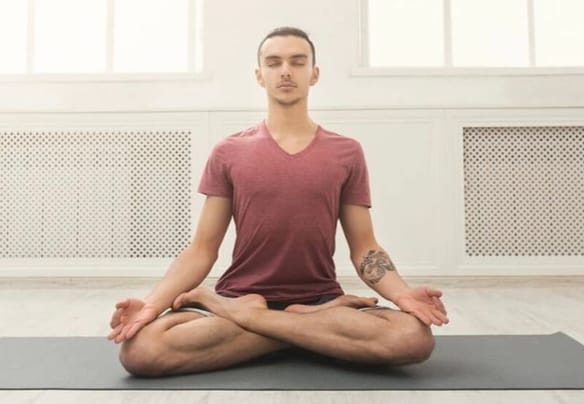🌬️ Asthma and Respiratory Problems: Pranayama to Relieve Breathing Issues 🧘♂️
March 28, 2025 | by paruli6722@gmail.com
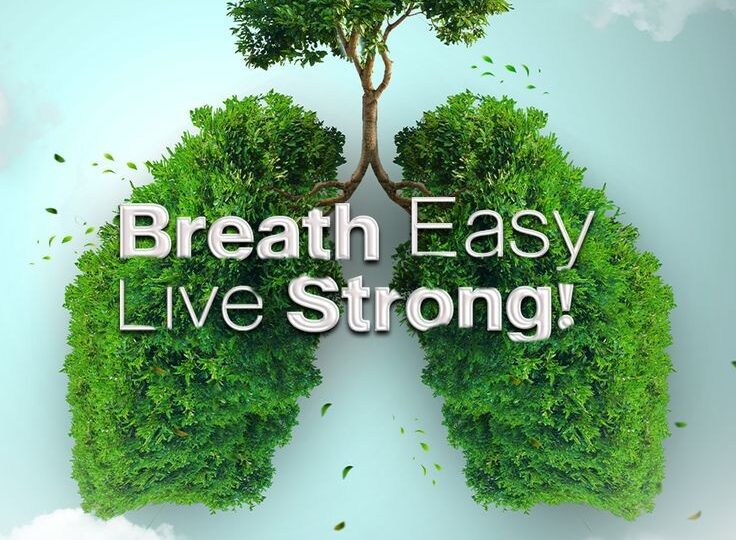
Discover powerful pranayama techniques to relieve asthma and respiratory problems naturally. Learn the best breathing exercises, yoga poses, and lifestyle tips to improve lung health and breathe freely.
📝 Understanding Asthma and Its Impact on Respiratory Health
Asthma and other respiratory problems have become increasingly common due to pollution, stress, and lifestyle factors. 😷 Difficulty in breathing, wheezing, and shortness of breath can significantly impact daily life. Yoga, particularly pranayama (breathing exercises), offers a natural and effective way to enhance lung function, reduce symptoms, and improve overall respiratory health. 🧘♀️💨
🏋️♂️ How Yoga Helps in Asthma and Respiratory Issues
Yoga enhances lung capacity 🫁, strengthens respiratory muscles 💪, and reduces stress 😌, which is often a trigger for asthma. Pranayama techniques focus on controlled breathing, which improves oxygen intake and helps clear congestion. 🌿
🔬 The Science Behind Pranayama and Lung Health
Scientific studies have shown that regular pranayama practice increases oxygen saturation ⏳, improves lung elasticity 🫁, and reduces airway inflammation 🔥. Controlled breathing exercises also enhance the efficiency of the diaphragm and reduce hyperventilation tendencies. 🧘♂️💨
🌟 Best Pranayama for Asthma and Respiratory Health
1. Anulom Vilom (Alternate Nostril Breathing) 🌬️
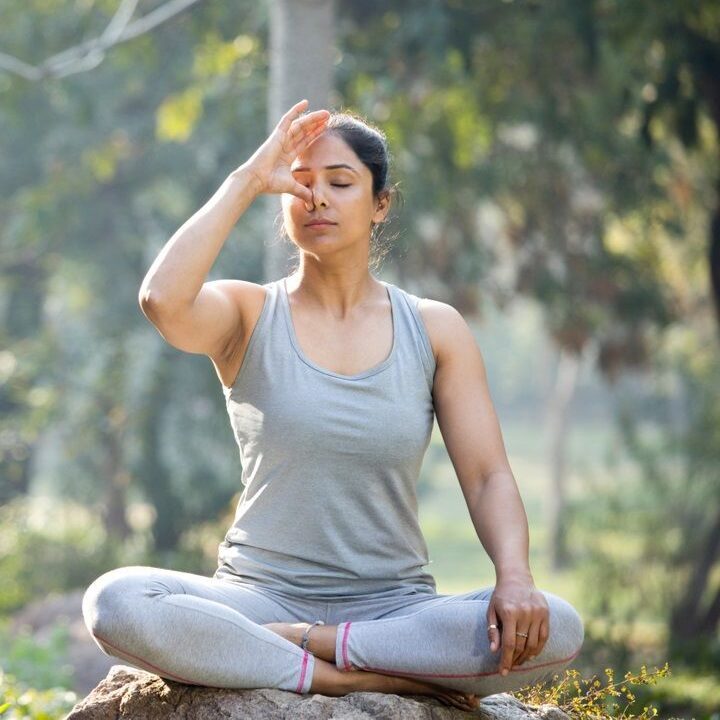
Anulom Vilom is one of the most effective pranayama techniques for improving lung function and managing asthma. By balancing the flow of oxygen and carbon dioxide in the body, it helps clear respiratory passages, strengthen lung capacity, and enhance overall breathing efficiency. 🌿
✅ Benefits of Anulom Vilom for Asthma and Respiratory Health:
- 🫁 Enhances lung function by improving oxygen intake and expelling toxins.
- 🌬️ Clears nasal congestion and helps in smoother airflow through the respiratory tract.
- 😌 Reduces stress and anxiety, which are common asthma triggers.
- 🔄 Balances the autonomic nervous system, promoting overall respiratory stability.
- 🚀 Boosts immunity, making the body more resistant to infections that may worsen breathing issues.
📝 How to Practice Anulom Vilom:
- Sit comfortably in a cross-legged position with a straight spine. 🧘♂️
- Use your right thumb to close your right nostril and inhale deeply through the left nostril. 👃
- Close your left nostril with your ring finger and exhale through the right nostril. 💨
- Inhale deeply through the right nostril, then close it and exhale through the left nostril.
- Continue this alternate breathing cycle for 5-10 minutes. ⏳
- Maintain a slow and steady breathing rhythm for maximum benefits.
👉 Pro Tip: Practice Anulom Vilom daily, preferably in the morning on an empty stomach, for better oxygen absorption and respiratory benefits. 🌞
2. Bhastrika Pranayama (Bellows Breathing) 🔥

Bhastrika Pranayama, also known as Bellows Breathing, is a dynamic and energizing breathing technique that boosts oxygen supply, strengthens the lungs, and helps clear respiratory blockages. It is highly effective in reducing symptoms of asthma, bronchitis, and other respiratory conditions. ⚡
✅ ** Benefits of Bhastrika Pranayama for Asthma and Respiratory Health:**
- 🔥 Increases lung capacity by improving oxygen absorption.
- 💨 Clears mucus and congestion from the airways.
- 🫁 Enhances blood circulation and strengthens the respiratory muscles.
- 😌 Reduces stress and anxiety, preventing asthma flare-ups.
- 🚀 Detoxifies the body, removing toxins that may affect lung health.
📝 Step-by-Step Guide: How to Practice Bhastrika Pranayama
- Sit Comfortably: Choose a quiet place and sit cross-legged with a straight spine. 🧘♀️
- Take a Deep Inhalation: Breathe in deeply through the nose, filling the lungs completely. 🌬️
- Forceful Exhalation: Exhale forcefully and rapidly through the nose, engaging the diaphragm. 💨
- Continue the Process: Repeat this inhale-exhale cycle at a moderate pace for 20-30 breaths.
- Gradual Increase: Start with 1-2 minutes and increase the duration gradually.
- Relax and Observe: After finishing, sit quietly and observe the natural breath for a few moments. 😌
👉 Pro Tip: Avoid practicing Bhastrika Pranayama if you have high blood pressure, heart problems, or recent surgery. Always practice under the guidance of an expert if you are new to pranayama. 🌞
3. Kapalbhati Pranayama (Skull Shining Breath) ✨
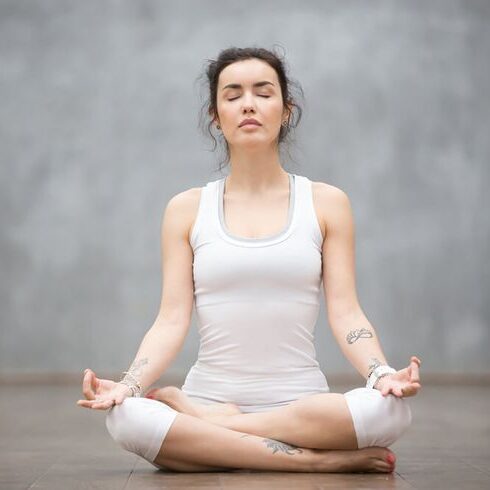
Kapalbhati Pranayama is an advanced breathing technique that detoxifies the lungs, enhances oxygen absorption, and improves overall respiratory function. It is particularly beneficial for clearing mucus, increasing lung capacity, and strengthening the diaphragm. 🌟
✅ Benefits of Kapalbhati Pranayama for Asthma and Respiratory Health:
- 🚀 Detoxifies the lungs, clearing out toxins and pollutants.
- 🫁 Increases oxygen supply, improving lung efficiency.
- 💪 Strengthens the diaphragm and abdominal muscles, aiding better breathing control.
- 🔄 Enhances blood circulation, ensuring better oxygen distribution.
- 😌 Reduces stress and anxiety, minimizing asthma flare-ups.
📝 Step-by-Step Guide: How to Practice Kapalbhati Pranayama
- Sit in a Comfortable Position: Keep your back straight and hands on your knees in a meditative posture. 🧘♂️
- Inhale Deeply: Take a long, deep breath through your nose. 🌬️
- Forceful Exhalation: Exhale quickly and forcefully through your nose while contracting your abdominal muscles. 💨
- Passive Inhalation: Let the inhalation happen naturally without effort.
- Repeat the Process: Continue this rhythmic breathing for 1-5 minutes, starting slow and gradually increasing intensity. ⏳
- Relax and Observe: After finishing, sit quietly and observe your natural breath. 😌
👉 Pro Tip: Avoid practicing Kapalbhati if you have high blood pressure, heart disease, or are pregnant. Perform it on an empty stomach for best results. 🌿
4. Ujjayi Pranayama (Victorious Breath) 🏆
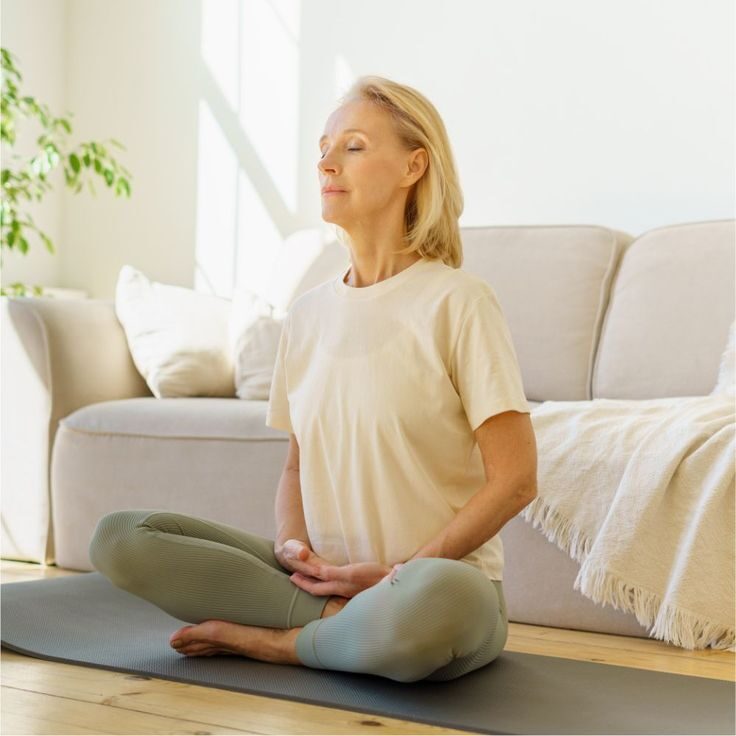
Ujjayi Pranayama, also known as the “Victorious Breath,” is a powerful breathing technique that improves lung function, enhances oxygen intake, and promotes relaxation. This technique is highly beneficial for individuals suffering from asthma and other respiratory problems. 💨
✅ Benefits of Ujjayi Pranayama for Asthma and Respiratory Health:
- 🫁 Strengthens the lungs, improving airflow and oxygen absorption.
- 🌊 Reduces wheezing and shortness of breath, making breathing easier.
- 🧘 Calms the nervous system, reducing stress-related asthma triggers.
- 🎯 Enhances concentration and mindfulness, promoting overall well-being.
📝 Step-by-Step Guide: How to Practice Ujjayi Pranayama
- Sit Comfortably: Maintain a straight spine and relax your shoulders. 🧘
- Inhale Deeply: Breathe in slowly through the nose, slightly constricting the throat. 🌬️
- Exhale with a Whisper Sound: Exhale through the nose while making a soft ocean-like sound at the back of your throat. 🌊
- Maintain a Steady Rhythm: Continue this slow, controlled breathing for 5-10 minutes. ⏳
- Relax and Observe: Sit quietly and feel the calming effects of the breath. 😌
👉 Pro Tip: Practice Ujjayi Pranayama in a quiet environment to fully experience its relaxing effects. 🌿
5. Sitali and Sitkari Pranayama (Cooling Breaths) ❄️
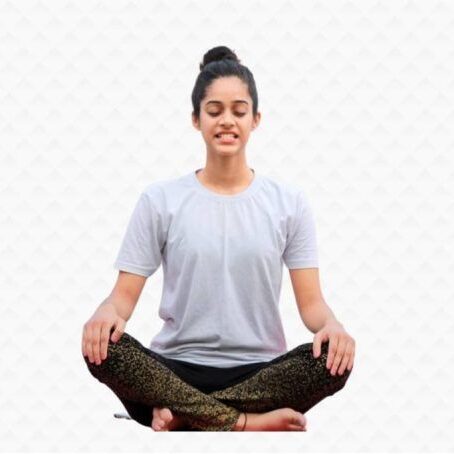
Sitali and Sitkari Pranayama are cooling breathing techniques that help soothe the respiratory system, reduce inflammation, and improve lung function. These pranayamas are particularly beneficial for individuals experiencing asthma, excessive heat in the body, or respiratory discomfort. 🌿💨
✅ Benefits of Sitali and Sitkari Pranayama for Asthma and Respiratory Health:
- ❄️ Cools the respiratory tract, reducing irritation and inflammation.
- 🌬️ Improves oxygen intake, helping asthmatic patients breathe more easily.
- 🫁 Soothes nasal congestion and clears blocked airways.
- 🔄 Reduces stress and anxiety, preventing asthma attacks triggered by tension.
- 🧘 Balances body temperature, promoting overall well-being.
📝 Step-by-Step Guide: How to Practice Sitali and Sitkari Pranayama
🔹 Sitali Pranayama (Cooling Breath):
- Sit Comfortably: Keep your spine straight and relax your shoulders. 🧘♂️
- Curl the Tongue: Roll your tongue into a tube shape and stick it out slightly. 👅
- Inhale Deeply: Slowly breathe in through the curled tongue, feeling the cooling sensation. ❄️
- Close the Mouth & Exhale Through the Nose: Breathe out slowly through your nose. 💨
- Repeat: Continue for 5-10 minutes for maximum benefits.
🔹 Sitkari Pranayama (Hissing Breath) – Alternative for Those Who Can’t Roll the Tongue:
- Sit in a Comfortable Position: Keep a relaxed posture. 🧘
- Place the Tongue Behind the Upper Teeth: Keep your lips slightly open. 😊
- Inhale Through the Teeth Gap: Breathe in slowly through the gaps of your teeth, producing a soft hissing sound. 🌬️
- Exhale Slowly Through the Nose: Release the breath gently through your nostrils. 💨
- Repeat for 5-10 minutes: Feel the cooling effect in the throat and lungs.
👉 Pro Tip: These techniques are best practiced in a calm environment, especially during hot weather, to enhance their cooling effects. 🌿
🧘♂️ Additional Yoga Poses for Better Lung Health
Apart from pranayama, certain yoga asanas also help in improving respiratory health:
- 🐍 Bhujangasana (Cobra Pose) – Expands the lungs and improves breathing.
- 🐠 Matsyasana (Fish Pose) – Enhances lung capacity and relieves congestion.
- 🌉 Setu Bandhasana (Bridge Pose) – Opens up the chest and promotes oxygen flow.
🍏 The Role of Diet in Managing Asthma and Respiratory Issues
A balanced diet plays a crucial role in maintaining lung health. Some beneficial foods include:
- 🧡 Anti-inflammatory foods: Turmeric, ginger, and green leafy vegetables.
- 🍊 Vitamin C-rich foods: Oranges, bell peppers, and berries help strengthen immunity.
- 🐟 Omega-3 fatty acids: Found in flaxseeds, walnuts, and fish, they reduce inflammation in the airways.
- 💧 Hydrating foods: Cucumber, watermelon, and herbal teas keep the respiratory tract moist and clear.
🆘 Breathing Techniques to Manage Asthma Attacks
In case of an asthma attack, controlled breathing techniques can help in managing symptoms effectively:
- 💨 Pursed-lip breathing: Inhale through the nose and exhale slowly through pursed lips to control breathlessness.
- 🫁 Diaphragmatic breathing: Breathe deeply into the belly rather than shallow breathing from the chest to improve oxygen intake.
🌿 Lifestyle Tips to Support Respiratory Health
- 🚭 Avoid smoking and exposure to pollution.
- 🍏 Maintain a healthy diet rich in antioxidants.
- 💧 Stay hydrated to keep the airways clear.
- 🧘 Practice yoga and meditation regularly to manage stress.
- 🌿 Use essential oils like eucalyptus and peppermint to clear nasal congestion.
- 🚶 Engage in mild physical activities like walking and stretching to keep the lungs active.
🌿 Important Home Remedies for Asthma and Respiratory Problems 🏡
In addition to pranayama, home remedies can provide relief from asthma symptoms and support overall lung health. Here are some effective remedies:
- 🍯 Honey and Warm Water: Drinking warm water with honey soothes the throat and clears mucus.
- 🌿 Ginger and Turmeric Tea: Both ingredients have anti-inflammatory properties that help reduce airway inflammation.
- 🧄 Garlic Cloves: Consuming raw garlic helps clear congestion and improves breathing.
- 🥛 Milk and Turmeric: Drinking warm milk with turmeric before bed helps in relieving nighttime asthma symptoms.
- 🍏 Steam Inhalation: Inhaling steam with eucalyptus oil clears nasal congestion and eases breathing.
- 🚰 Stay Hydrated: Drinking plenty of water helps thin mucus and prevents airway blockages.
- 🍃 Herbal Remedies: Tulsi (Holy Basil), black pepper, and licorice tea help in improving lung function naturally.
🔎 Frequently Asked Questions About Asthma and Respiratory Problems
1️⃣ What is the main cause of asthma?
Answer: Asthma is caused by a combination of genetic and environmental factors. Common triggers include air pollution, allergens (like pollen, dust, pet dander), respiratory infections, cold air, smoke, and stress. 🏭🌿
2️⃣ Can asthma be cured permanently?
Answer: Asthma is a chronic condition that cannot be completely cured, but it can be effectively managed with proper lifestyle changes, medication, and yoga practices like pranayama. 🧘♂️💨
3️⃣ What are the early signs of asthma?
Answer: Early symptoms include shortness of breath, wheezing, coughing (especially at night or early morning), chest tightness, and frequent respiratory infections. 🚨
4️⃣ How does pollution affect asthma?
Answer: Air pollution, including smoke, dust, and chemical fumes, can trigger asthma attacks by irritating the airways and causing inflammation. Using air purifiers and practicing breathing exercises can help reduce the impact. 🌍💨
5️⃣ What are the best yoga poses for asthma?
Answer: Poses like Sukhasana (Easy Pose), Bhujangasana (Cobra Pose), and Setu Bandhasana (Bridge Pose) help open the chest and improve lung capacity. 🧘♀️
6️⃣ Which pranayama is best for asthma relief?
Answer: Anulom Vilom (Alternate Nostril Breathing), Bhastrika (Bellows Breath), and Ujjayi (Victorious Breath) are highly effective in managing asthma symptoms. 🌿
7️⃣ How does Anulom Vilom help in asthma management?
Answer: This breathing technique improves oxygen intake, reduces airway blockages, and calms the nervous system, which can help in preventing asthma attacks. 🌬️
8️⃣ Can Kapalbhati cure breathing problems?
Answer: Kapalbhati helps detoxify the lungs, removes excess mucus, and strengthens the diaphragm, making it a great practice for improving respiratory function. ✨
9️⃣ What is the role of diet in asthma prevention?
Answer: A diet rich in antioxidants, vitamin C, and omega-3 fatty acids can reduce inflammation and improve lung health. Foods like turmeric, ginger, honey, and green leafy vegetables are beneficial. 🥗🍯
🔟 Which home remedies help in reducing asthma symptoms?
Answer: Drinking warm water with honey, consuming ginger tea, inhaling steam with eucalyptus oil, and using turmeric in food can help relieve asthma symptoms naturally. 🍵
1️⃣1️⃣ How can I strengthen my lungs naturally?
Answer: Regular pranayama, deep breathing exercises, staying hydrated, and engaging in physical activities like walking and swimming can improve lung function. 🫁
1️⃣2️⃣ What is the best sleeping position for asthma patients?
Answer: Sleeping on your back with your head slightly elevated or on your left side can help keep the airways open and prevent breathing difficulties at night. 😴
✅ Conclusion
Regular practice of pranayama and yoga can significantly improve respiratory health, alleviate asthma symptoms, and enhance overall well-being. 🌬️ By incorporating these breathing exercises into daily life, individuals suffering from asthma and respiratory issues can experience relief and breathe more freely. 🧘♀️💨
RELATED POSTS
View all


